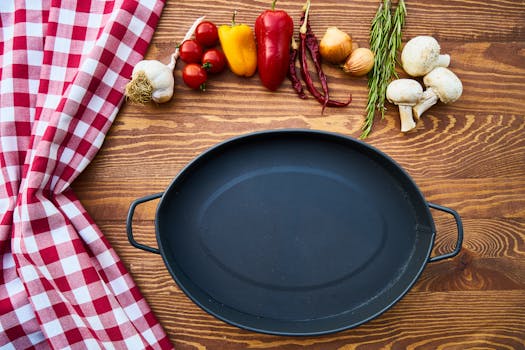Cooking in Cast Iron Pots: Advantages and Tips for Proper Maintenance and Use
Cast iron cookware has been a staple in kitchens for centuries, revered for its durability and versatility. From frying to baking, cast iron pots can handle a variety of cooking methods, making them a favorite among both amateur cooks and professional chefs. This article explores the numerous advantages of cooking with cast iron pots and provides essential tips for their maintenance and use.
The Advantages of Cooking with Cast Iron
Cast iron cookware offers several benefits that make it a worthwhile investment for any kitchen. Here are some of the key advantages:
- Excellent Heat Retention: Cast iron pots distribute heat evenly and retain it for a long time, which is ideal for slow cooking and frying.
- Versatility: These pots can be used on the stovetop, in the oven, or even over an open flame, making them suitable for a wide range of recipes.
- Natural Non-Stick Surface: When properly seasoned, cast iron provides a natural non-stick surface that improves with use, allowing for healthier cooking with less oil.
- Durability: Cast iron cookware can last a lifetime or longer if maintained correctly, making it a sustainable choice for eco-conscious consumers.
- Health Benefits: Cooking with cast iron can increase the iron content of food, which is beneficial for individuals with iron deficiencies.
According to a study published in the Journal of Food Science, cooking in cast iron can significantly increase the iron content in foods, particularly acidic dishes like tomato sauce. This makes cast iron not only a practical choice but also a health-conscious one.
Tips for Proper Maintenance of Cast Iron Pots
To enjoy the full benefits of cast iron cookware, proper maintenance is essential. Here are some tips to keep your pots in excellent condition:
- Seasoning: Before using a cast iron pot for the first time, it should be seasoned. This involves applying a thin layer of vegetable oil and baking it at a high temperature to create a non-stick surface.
- Cleaning: Avoid using soap or abrasive scrubbers. Instead, clean your cast iron pot with hot water and a stiff brush. For stubborn residue, use coarse salt as a scrubber.
- Drying: Always dry your cast iron pot immediately after washing to prevent rust. You can place it on low heat for a few minutes to ensure it is completely dry.
- Re-seasoning: If food starts to stick or the surface appears dull, it may be time to re-season your pot. This can be done by applying oil and baking it again.
- Storage: Store your cast iron pots in a dry place. To prevent moisture buildup, place a paper towel inside the pot to absorb any humidity.
Using Cast Iron Pots Effectively
To maximize the cooking experience with cast iron pots, consider the following tips:
- Preheat: Always preheat your cast iron pot before adding food. This helps achieve a good sear and prevents sticking.
- Temperature Control: Cast iron retains heat well, so you may need to adjust your cooking temperature. Start with medium heat and adjust as necessary.
- Avoid Acidic Foods Initially: If your pot is newly seasoned, avoid cooking highly acidic foods like tomatoes until the seasoning is well established.
- Use the Right Utensils: Opt for wooden or silicone utensils to avoid scratching the seasoned surface.
Conclusion
Cooking with cast iron pots offers numerous advantages, from excellent heat retention to health benefits. With proper maintenance and usage tips, these durable cookware pieces can become a cherished part of your kitchen for generations. By investing time in seasoning and caring for your cast iron pots, you can enjoy delicious meals while also reaping the benefits of enhanced iron content in your diet. Embrace the tradition of cast iron cooking and elevate your culinary skills today!
